Sepia opened in 2009, the first solo venture of chef Martin Benn. British born, he started his culinary career in London at The Oak Room in the days of Jean-Michel Lorain, and later worked at The Landmark and Criterion. He moved to Australia in 1996 and worked for two years at the excellent but now closed Forty One, moving to Tetsuya in 1999 and becoming head chef there. He also worked at a place called The Boathouse on Blackwattle Bay in Glebe before opening Sepia along with Vicki Wild, who also used to work at Tetsuya. The restaurant is currently located in Darling Harbour though it may well be moving to Melbourne. The move was originally announced as happening in late 2017, but Sepia was still here, large as life, in January 2018. The latest estimate was that the move would happen in late 2018. The dining room has a high ceiling with wood panelling but is carpeted, meaning that noise levels are blessedly moderate, even with some jazz playing in the background. The dining room can accommodate up to seventy guests at any one time. Lighting was a touch on the murky side, which results in similarly murky food photos.
There is no menu option, just a no-choice tasting menu at AS$245 (£140). The kitchen will try and accommodate reasonable dietary preferences if notified in advance, though vegans can look elsewhere for their dinner. The extensive wine list had over 800 references and offered labels such as Domaine Goisot Aligote 2015 at AS$82 for a bottle that you can find in the high street for AS$27, Bindi Kostas Rind Chardonnay 2014 at AS$133 compared to its retail price of AS$66, and Cambridge Road Pinot Noir 2010 at a hefty AS$169 for a wine that will set you back AS$47 in the shops. For those with the means, there were prestige wines on offer too, such as Vega Sicilia Unico 1999 at AS$1,350 compared to its retail price of AS$561, and Leflaive Chevalier Montrachet 2011 at AS$1,400 for a bottle with a current market value of AS$884. Markups, as noted, could be substantial. German wines are often a haven for value on posh restaurant wine lists, yet here J.J. Prum Spatlese Wehlener Sonnenuhr 2003 was AS$248 compared to its retail price of AS$75. Elsewhere the markups could be simply puzzling. Didier Dagenau Silex was available in several vintages at AS$491, yet the 2014 retails at AS$183 whereas the 2009 costs AS$222 in a shop. Both were on the wine list here at the same price.
A pretty little array of half a dozen amuse bouches began the meal. There was a tempura of a leaf of something in the mint family dotted with little spots of prawn mayonaisse, the overall effect crisp and enjoyable. This was accompanied by charcoal grilled shiitake mushroom and very light tempura of prawn. A set of alternating layers of aubergine and tofu tasted a lot better than I was expecting, and a pretty little tartlet of kingfish and purple yam was delicate, the kingfish having excellent flavour. There was also a sphere of smoked salmon with salmon roe inside and a garnish of chrysanthemum leaf. Best of all was a cylinder of water chestnut, tuna and caviar, the brininess of the caviar nicely balancing the inherent richness of the tuna. These were high-grade nibbles (17/20).
This was followed by yellowfin tuna sashimi wrapped around an egg yolk with unpasteurised soy sauce, fromage blanc, oil made from wasabi leaves and grated wasabi root. This was lovely, the richness of the egg and tuna nicely balanced by the gentle spicy kick of the wasabi (18/20). Next was a roll of squid caught near Port Lincoln, with wild wood sorrel and finished with yuzu. The acidity of the yuzu worked nicely the squid, which was beautifully tender (18/20).
Spanner crab came with brown butter, heirloom tomatoes, a jelly of sake vinegar and a powder of peas and horseradish that was poured on at the table. The tomatoes, unlike so many heirloom tomatoes, had real flavour, the crab was delicate and the hint of heat from the horseradish added an extra flavour dimension, the jelly working well with the delicate crab (18/20).
This was followed by toothfish from a company called Glacier 51, sourced from seas off a remote part of the sub-Antarctic called Heard Island. This fish is none other than a close relative of the Patagonian toothfish that years ago was cunningly marketed as “Chilean sea bass”, despite it being neither Chilean nor sea bass. Toothfish has large flakes and plenty of umami flavour, served here with fermented kabu (Japanese turnip) grown in Tasmania, along with butter dashi, cream of confit of young garlic and purslane. This was pleasant albeit for me a touch on the bland side, though the texture of the fish was certainly good (16/20).
Next was a white fish called imperador, a deepwater fish also known as alfonsino (or by the rather wonderful name “splendid alfonso”), a fish with a rich, slightly sweet flavour that I had only eaten previously in Japan. This came with shredded daikon radish, pickled almonds and tozasu sauce, a Japanese vinegar dressing made from dashi, soy, rice vinegar and kombu. The fish itself was good, but for me the daikon, though pretty, was a slightly one-dimensional accompaniment (15/20). Scampi with wood ear mushroom, guanciale (pork cheeks) and jamon cream was a lovely combination of flavours, the scampi sweet and the meat flavours going well with it (17/20). A bite-sized piece of fried bread was topped with bone marrow, caviar, cauliflower and wasabi. A variant for non-carnivores had bonito instead of bone marrow. This was a pleasing bite, but the dominant flavour was actually the fried bread, despite the potentially strong tastes involved here. For me the balance of this was not quite right (15/20).
This was followed by an interesting and original dish of “shiitake mushroom sushi”, where a mushroom stock is dried into thin sheets and then sliced finely, and heaped upon warm sushi rice. The rice was from Japan and was the correct body temperature for sushi, and the mushrooms both looked pretty and tasted good (17/20). A scallop was served with apricot and macadamia cream with “scallop crackling”, essentially crisp shreds that had a distinct scallop flavour. The technique was good, let down by the rather ordinary scallop, which did not have the really sweet flavour that you find in high quality specimens from the North Sea (15/20).
Marron tail (a type of crayfish) came with confit of lemon, a powder of the shells and an emulsion of citrus and crustacean. The crayfish had good, slightly sweet flavour and was delicately cooked, but the powder accompaniment, while pleasant in itself, meant that the overall effect was rather dry. For me this was crying out for some sort of sauce, like a shellfish veloute (15/20). Aylesbury duck came with sheep yoghurt, candied apples and pink lady apples. The apples were a nice touch, as their acidity balanced the richness of the duck, which was cooked pink and had pleasant flavour (16/20). The final savoury course was David Blackmore wagyu rib cap that had been smoked and charcoal grilled, served with nori mustard and pickled myoga, a Japanese ginger. The beef had good flavour and the use of the pickled myoga was a nice touch, as the vinegar used in the pickling cut through the richness of the wagyu (17/20).
There was a cheese course of an Australian cheese called “Mountain Man”, served with apple and sobacha (buckwheat tea) biscuit. I applaud the use of local products, but I don't think the finest cheese makers of France will be quaking in their boots at the competition here. It was vaguely reminiscent of Reblochon.
A pre-dessert was finger lime and gingerade sphere, the outside coating being made of mannitol sugar, a sugar with a high melting point that sets easily. This was very refreshing, the citrus sharpness of the finger limes cutting through the slight sweetness of the sugar coating, the ginger flavour coming through well (18/20). This was followed by iced rhubarb with blackberries and salted white chocolate chantilly. This was enjoyable, the fruit flavour working well and the rhubarb not too sharp (17/20). Next, six different oranges appeared as jelly with cream of bergamot, white chocolate and fennel pollen, the latter being mercifully subtle. The fruit flavour was very good, working nicely with the white chocolate (17/20). The final dessert was a signature dish of the restaurant, a take on Black Forest flavours. Blackberry sorbet sat atop chocolate cream, green tea moss, sour cherry jelly, chocolate sticks, crystallised fennel, elderflower and chocolate soil. This had the potential to misfire, but the potentially alien flavours of fennel and elderflower were subtle enough not to distract unduly from the main flavours of chocolate, cherry and blackberry (17/20). There was a tea menu with no less than thirty-three different teas and tisanes, though coffee was Nespresso.
Service was excellent, led by a manager who is originally from Norfolk but has been working here since the restaurant opened. The bill came to AS$438 (£251) each before tip (AS$966 for two in total) with some good wine. If you took the wine pairing at AS$145 then you would spend AS$390 plus any incidentals like coffee and water, plus a tip, so realistically a typical cost per head would be AS$440 (£252). This is a lot of money, but clearly a great deal of work has gone into the food here. Overall I enjoyed my evening at Sepia, where the food is modern and innovative yet still feels enjoyable and appealing rather than the kitchen showing off how clever it is. Doubtless they will flourish in their new location in Melbourne.






























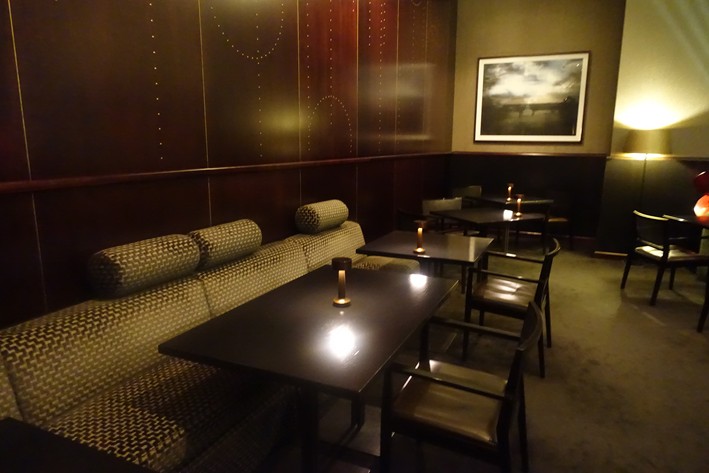


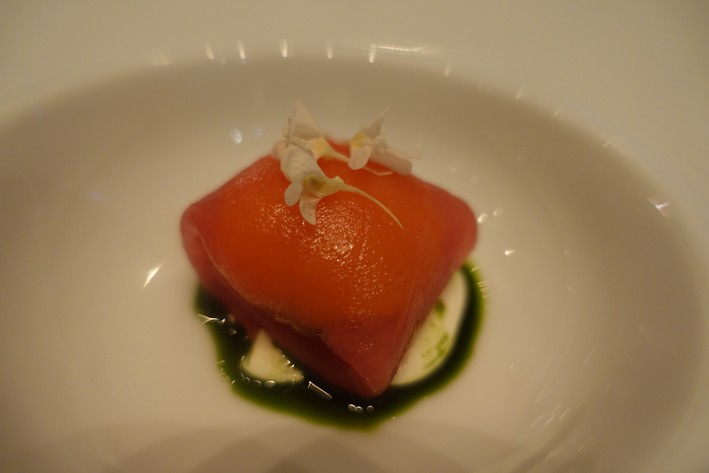

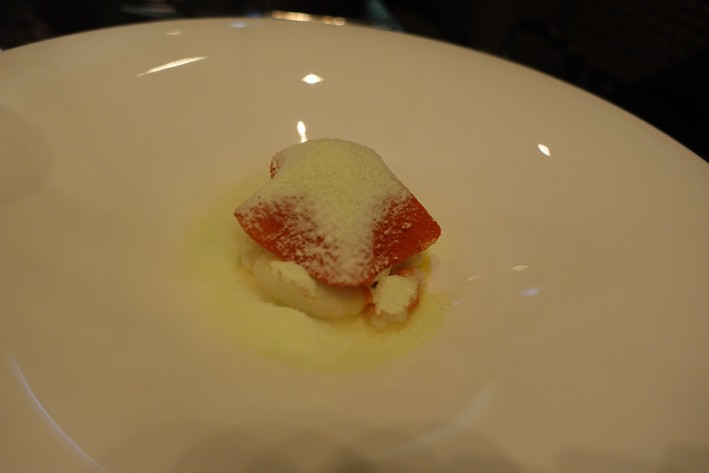




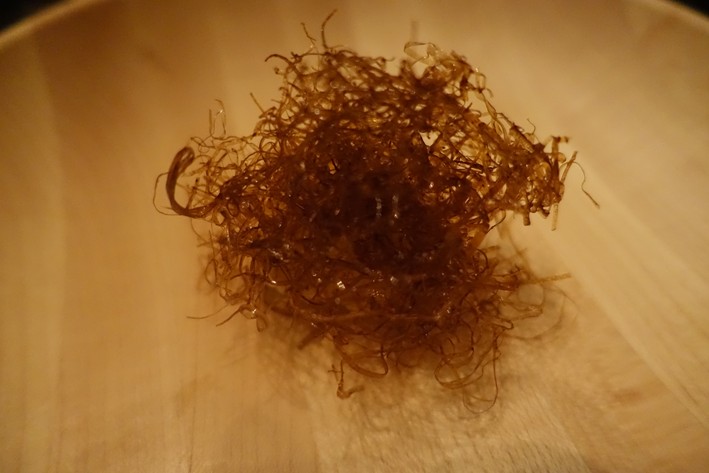
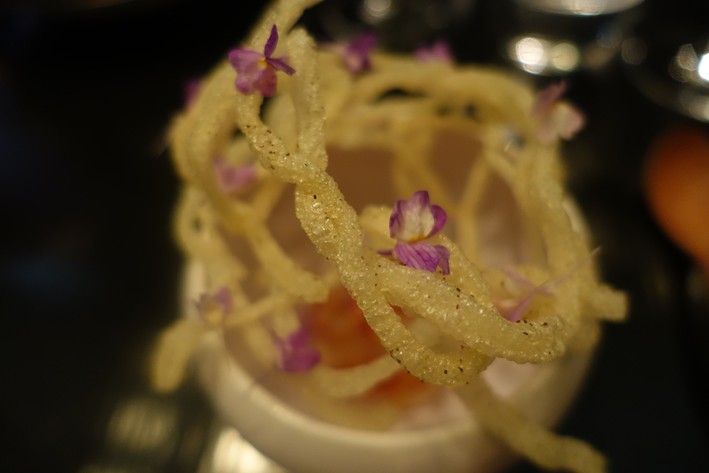
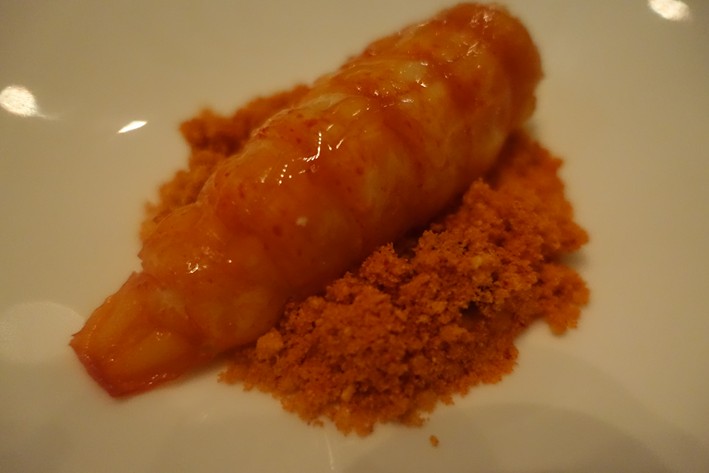



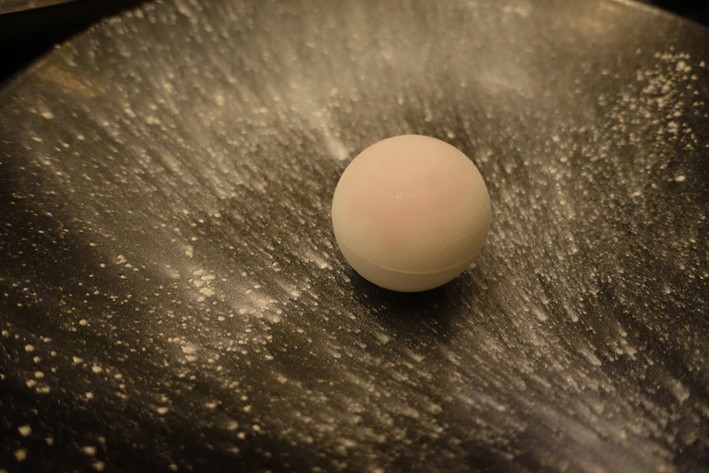
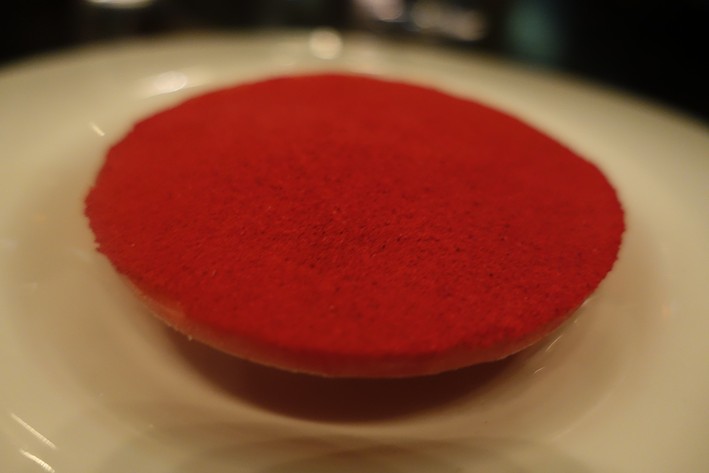
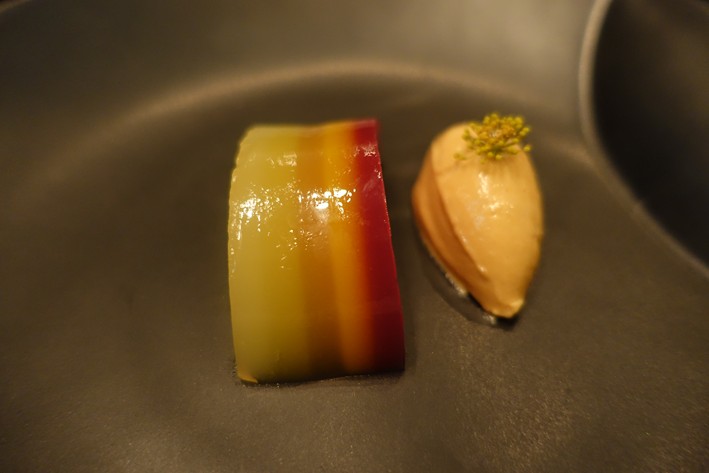
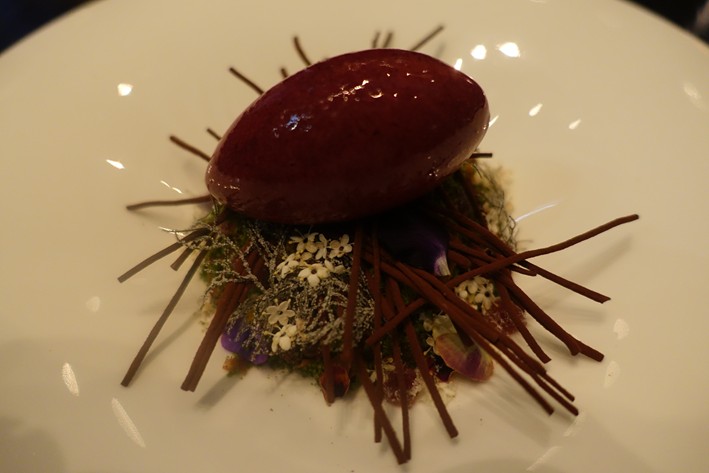
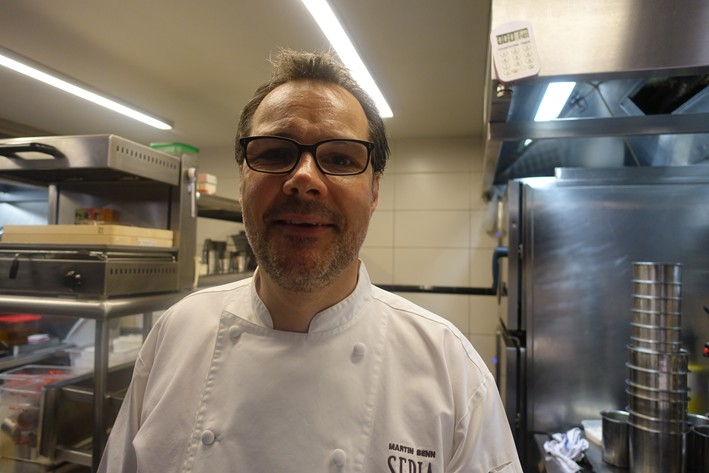

Add a comment
Thank you for submitting your comment, this will be checked and added to the website very soon.
User comments